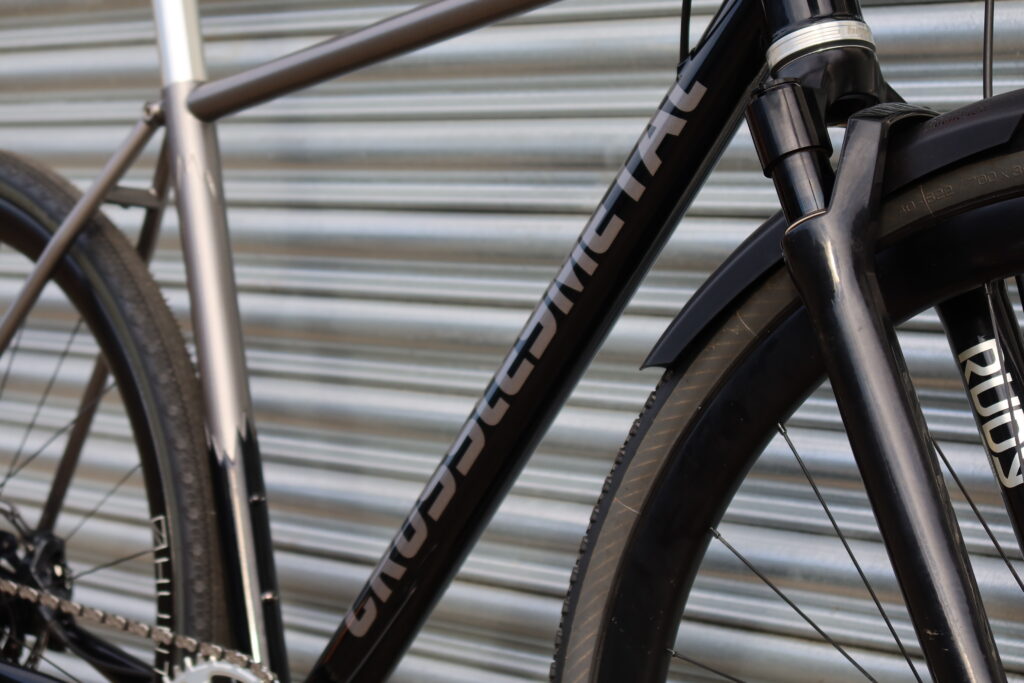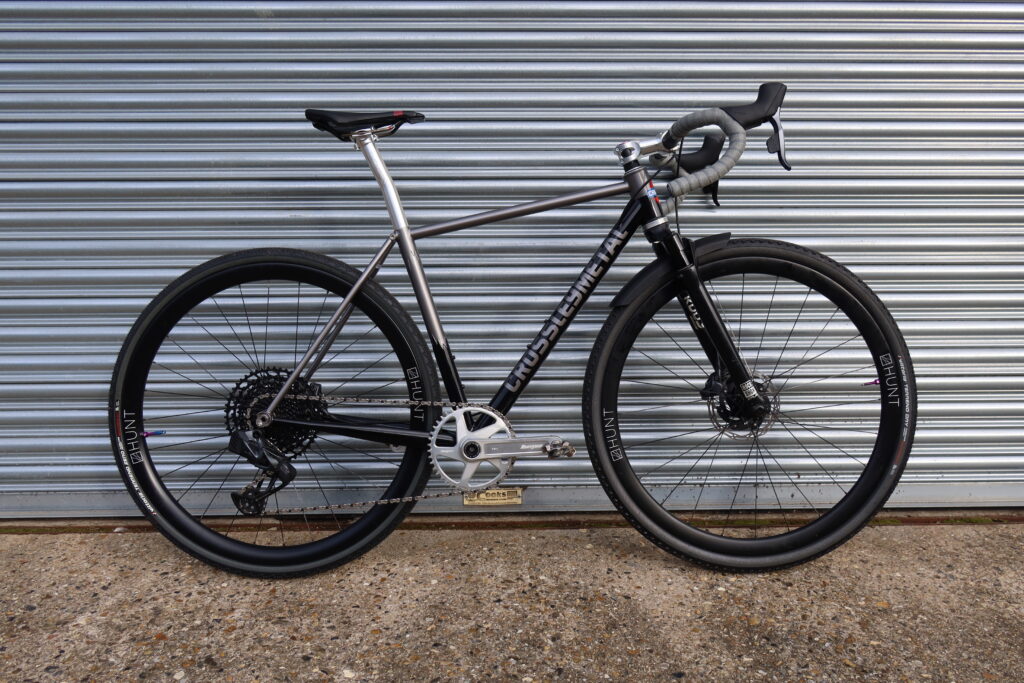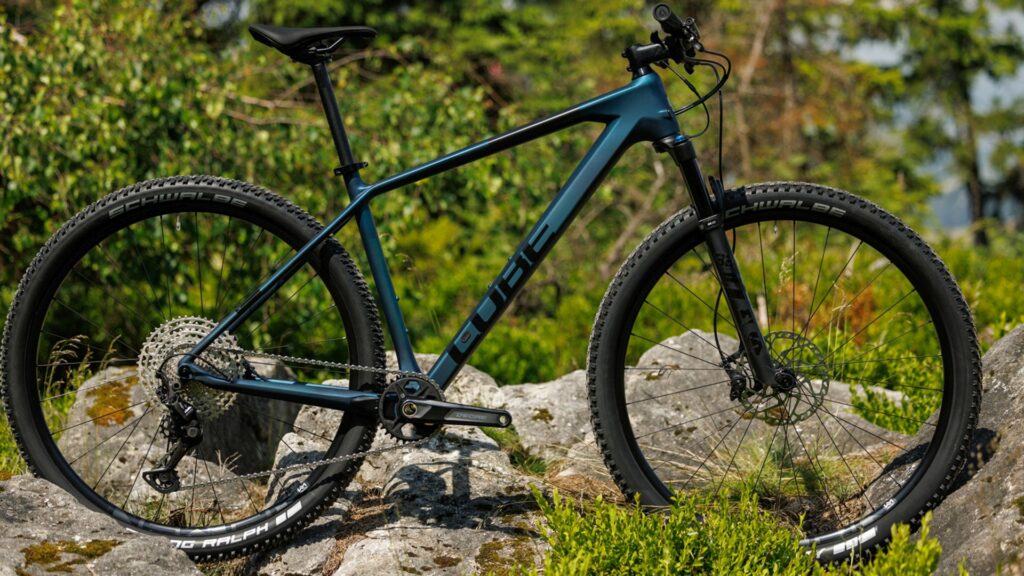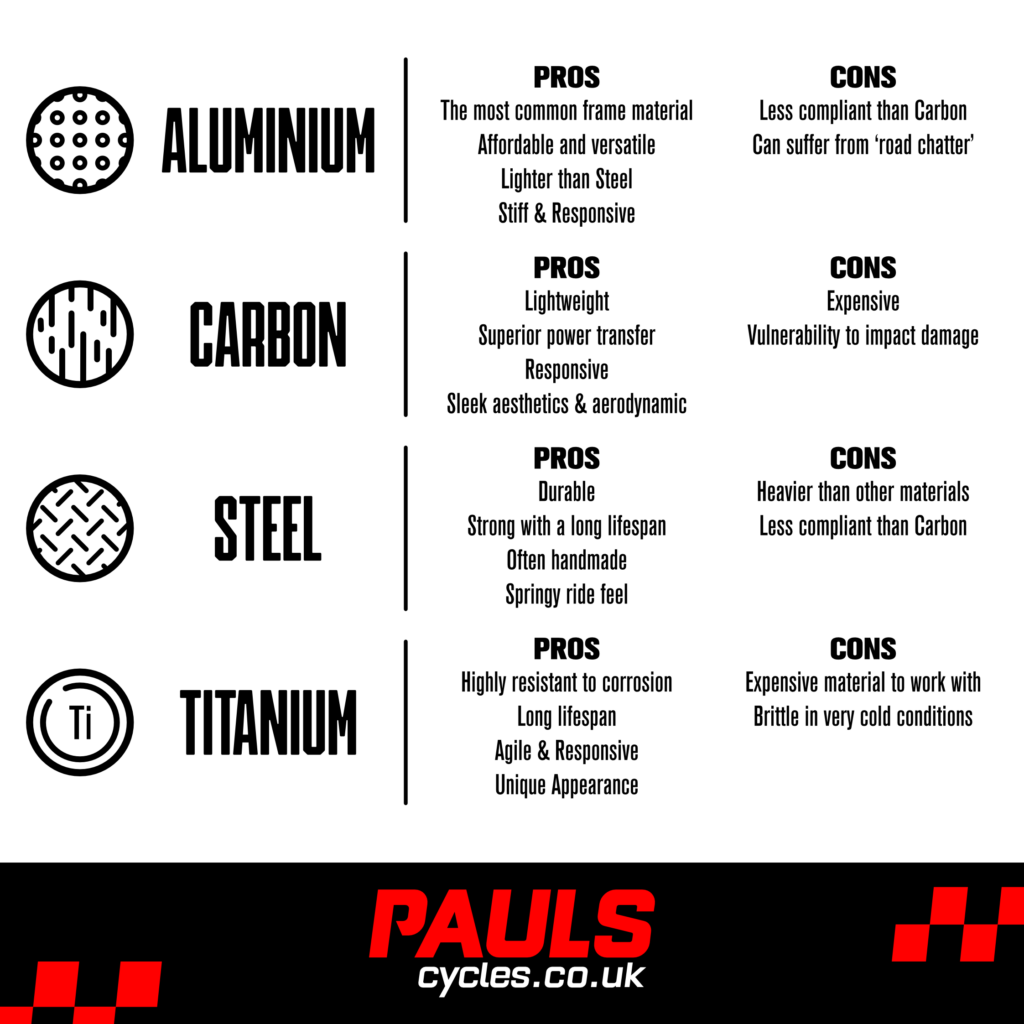When it comes to choosing a bike, there’s more to it than just picking a colour or style. However, anything more technical can sometimes seem a little overwhelming if you’re not in the know. In this article, we’ll help you with the different bike frame materials, and their qualities, giving you all you need to know on choosing a bike frame material to suit your riding style and budget.

The Importance of Choosing the Right Frame: Bike Frame Materials Explained
The bike frame is the backbone of your bicycle. Quite literally! It provides strength, and stability, and influences the bike’s overall performance. As such, the frame material plays a crucial role in your cycling experience, and with technology advancing, there are now several different options to choose from that all come with different price tags. Choosing the right frame material can greatly impact your comfort, speed, and durability. Whether you’re a newbie cyclist or an experienced rider, understanding the different frame materials will empower you to make an informed decision on where and what to invest your money in.
The material selection for your bike frame depends on multiple factors, including your riding style, weight, and sense of adventure. If you’re looking for a town bike, you might not benefit from the investment in a carbon frame, as you would if you’re looking to gain speed on a road bike. Let’s delve into the common materials used in bike frames, considering their characteristics and suitability for different preferences.
Steel Bike Frames
Steel is known for its exceptional durability and resistance to fatigue, making it a preferred choice for riders seeking a long-lasting frame that can withstand various riding conditions and the demands of daily use. This makes it well suited for mountain bikes tackling technical trails with rocks and roots, touring and bike-packing, commuting, and riders generally seeking a comfortable and reliable ride. A steel frame will also give you excellent shock absorption, making your experience smoother and more comfortable, which is ideal for those long-distance rides. However, this robustness also means they tend to be heavier compared to other materials, which might not be ideal for those seeking maximum speed or racing performance, where weight is a critical factor.
If weight is not a concern, there’s still a lot to love with steel frames over their more common metal sibling, aluminium. Steel frames are well-suited for customisation, allowing frame builders to create unique and tailored frame designs. This appeals to riders who appreciate the craftsmanship and personalisation offered by custom-built steel bikes, as well as their classic and timeless charm. This aesthetic appeal, combined with the nostalgic connection to cycling history, gives ongoing popularity to steel-framed bicycles.
While other materials like aluminium, carbon fibre, and titanium have gained prominence in certain cycling niches, steel frames continue to have a dedicated and enthusiastic following. Whether it’s for the love of craftsmanship, the desire for a comfortable ride, or the affordability factor, steel frames hold their place in the diverse landscape of the cycling world.
- Pros: Durability, strength, affordability, comfortable ride, repairable, craftsmanship, personalisation, more compliance than aluminium.
- Cons: Heavier compared to other materials, less compliance than carbon.

Aluminium (Alloy) Bike Frames
Aluminium frames, also commonly referred to as alloy frames, are a popular choice due to their affordability and lighter weight (in comparison to other metals such as steel) and are therefore increasingly a common bike frame material.
Providing a great balance between performance and cost makes aluminium suitable for a wide range of cycling disciplines. The ‘stiffness’ of a frame plays a crucial role in determining a bicycle’s performance and comfort, with aluminium frames generally being stiffer than steel. “Stiffness” in a frame offers more efficient power transfer and responsiveness which can be beneficial in both aluminium mountain bikes and aluminium road bikes depending on their intended use. These frames feel more rigid, which is advantageous for riders seeking a more aggressive and sporty feel, especially as this is coupled with the decreased weight of the frame which allows for easy manoeuvrability and acceleration. However, this may be less desirable for those who are after a more forgiving ride when it comes to absorbing road vibrations, so the ride might feel slightly bumpier compared to other materials such as steel or carbon.
- Pros: More lightweight than steel, affordable, versatile for different cycling disciplines, stiffness and responsiveness.
- Cons: Less compliance & comfort, less forgiving on rough roads and trails, more vibrations and “road chatter”.
Which is better, alloy or aluminium bike frame?
Alloy refers to a mixture of metals, while aluminium is a specific metal. In the context of bike frames, aluminium frames are often referred to as alloy frames interchangeably.

Carbon Fibre Bike Frames
Carbon fibre frames are the high-tech marvels of the cycling world. They offer an excellent stiffness-to-weight ratio, providing enhanced power transfer and a more responsive ride. Carbon frames also dampen vibrations, resulting in a smooth and comfortable experience even on rough terrain – this makes it common for road bikes where you may want to minimise what we would call “road chatter”. These frames are commonly chosen by riders who prioritise speed, responsiveness, and a luxurious ride, or if they have particular riding goals. However, carbon frames do come with a higher price tag compared to other materials, making them less accessible for riders on a tight budget.
- Pros: Lightweight, excellent power transfer, dampens vibrations, responsive ride, modern and sleek aesthetics, corrosion resistance, and aerodynamics.
- Cons: Higher price range, vulnerability to impact damage, brittleness, and repair complexity.
Do carbon frames break easily?
Carbon frames are designed to be strong and durable. While they can be damaged quite severely in high-impact crashes, they are not prone to breaking under normal riding conditions; however, they do respond uniquely to damage compared to traditional metal frames. Rather than denting, these frames can crack or splinter upon impact, with potential hidden damage and delamination. While carbon fibre absorbs impacts, it may not show visible signs of damage, requiring thorough inspection. Stress concentration points can form over time, in turn affecting structural integrity. Repairing carbon frames often requires specialised techniques, and professional assessment is crucial after incidents like crashes.
Regular inspections, cautious handling, and proper maintenance can help mitigate some of the potential drawbacks associated with carbon frames. These are essential to maintaining the frame’s performance and safety, given its unique characteristics.
Carbon versus aluminium bike frames
Carbon bikes are renowned for their lightweight construction, providing exceptional performance benefits, making them ideal for competitive cyclists, those tackling hilly terrain, or riders prioritising aerodynamics and technology. However, the premium nature of carbon, whether on carbon mountain bikes or carbon road bikes, comes with a higher price tag. On the other hand, aluminium bikes are more budget-friendly and still offer a lightweight and durable option. They are suitable for riders seeking a cost-effective solution without compromising too much on performance. A middle-ground option involves an aluminium bike with carbon components, combining the affordability of aluminium with the performance advantages of carbon. This option is particularly appealing for enthusiasts looking for a balanced approach, offering a lightweight frame with upgraded carbon elements like forks, handlebars, or wheels. It strikes a good compromise for those who want improved performance without the cost associated with a full carbon frame. Ultimately, the best choice depends on your cycling goals, budget constraints, and personal preferences.

Titanium Bike Frames
Titanium bikes are not as common as those made from more traditional materials like aluminium or carbon fibre. While titanium offers unique advantages such as durability, corrosion resistance, and a comfortable ride, it is a relatively expensive material to manufacture and work with. The cost of titanium frames contributes to their lower prevalence in the market compared to more budget-friendly options. Additionally, the demand for titanium bikes is often niche, appealing to cyclists who prioritise specific qualities like longevity, comfort, and a distinctive ride feel. While titanium frames have a dedicated following, they remain less common than bikes made from other materials in the broader cycling community.
- Pros: Strong, long lifespan, durable, highly resistant to corrosion, rust, and degradation, relatively lightweight, agile and responsive.
- Cons: Higher price range, brittleness in cold temperatures, less lightweight and rigid than carbon frames.
Titanium vs Carbon bike
Choosing between a titanium and carbon bike boils down to your preferences and priorities. Titanium bikes are durable, corrosion-resistant, and offer a comfortable ride. They may come with a higher price tag, but you get longevity and reliability in return. On the flip side, carbon bikes are lightweight and provide a responsive ride, making them popular among those seeking speed. However, they can be more susceptible to impact damage, and repairs might be a bit intricate. Your decision depends on factors like budget, riding preferences, and the importance you place on comfort, durability, and weight.
So Which Frame Material is Right for Me? Bike Frame Materials Comparison

What is the strongest bike frame material?
The exceptional strength-to-weight ratio of titanium makes it one of the strongest bike frame materials according to many universal testing methods, such as the Rockwell hardness test.
Which bike frame material is the lightest?
The lightest bike frame material available is carbon fibre, renowned for its exceptional strength-to-weight ratio and high rigidity. Many brands strive to list the lowest possible overall bike weight, but in reality, the total weight can vary significantly based on frame size, finish, hardware and accessories. Opting for a carbon fibre bike is ideal for competitive cyclists or avid enthusiasts who prioritise speed, agility, and performance. The reduced weight of a carbon fibre bike enhances climbing and acceleration capabilities, offering a tangible advantage in races or intensive cycling sessions.
What frame material should I choose for mountain biking?
The type of material you choose for a mountain bike frame will depend on your riding style and priorities. Aluminium frames are a solid choice (no pun intended!) if you’re looking for affordability, durability, and a lightweight option. While carbon fibre frames are pricier, they’re lightweight and stiff, making them perfect for high-performance and more aggressive mountain biking with excellent shock absorption. Steel frames, on the other hand, have a lot of natural compliance, so they’re a great option if comfort is a priority. Consider your budget, preferred riding terrain, and the balance between weight and durability when choosing a mountain bike.
Find your perfect bike with Paul’s Cycles
Choosing the right frame material for your bike is an important decision that can significantly impact your cycling experience. Whether you’re a newbie cyclist or a seasoned rider, understanding the qualities and characteristics of different frame materials is key to finding the perfect match for your needs.
At Paul’s Cycles, we offer a wide range of bikes with different frame materials, ensuring there’s a suitable option for every cyclist. We are here to support you through every stage of your cycling journey, providing expert advice and guidance. If you have any further questions or need assistance in choosing the right bike frame material, please don’t hesitate to get in touch with us. Remember, the right bike frame material can make all the difference in your ride.




